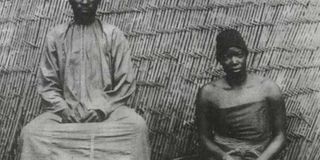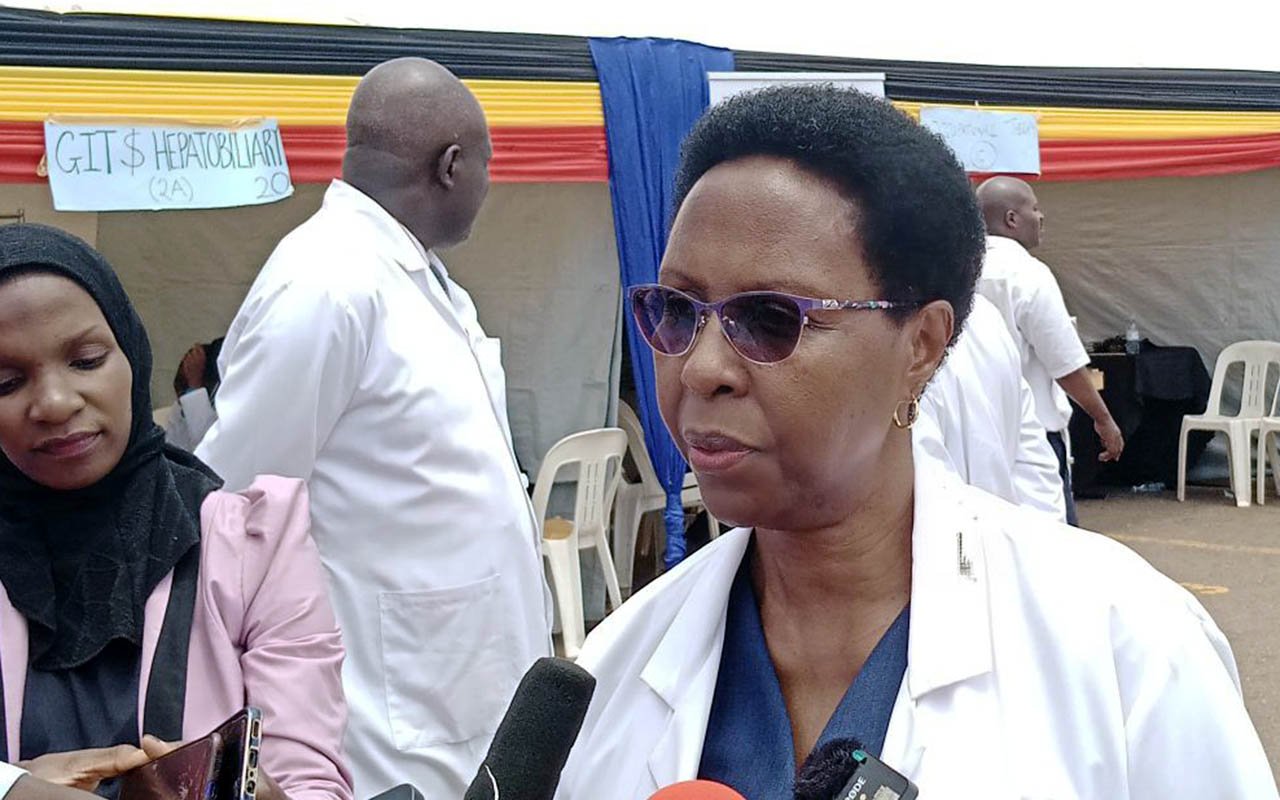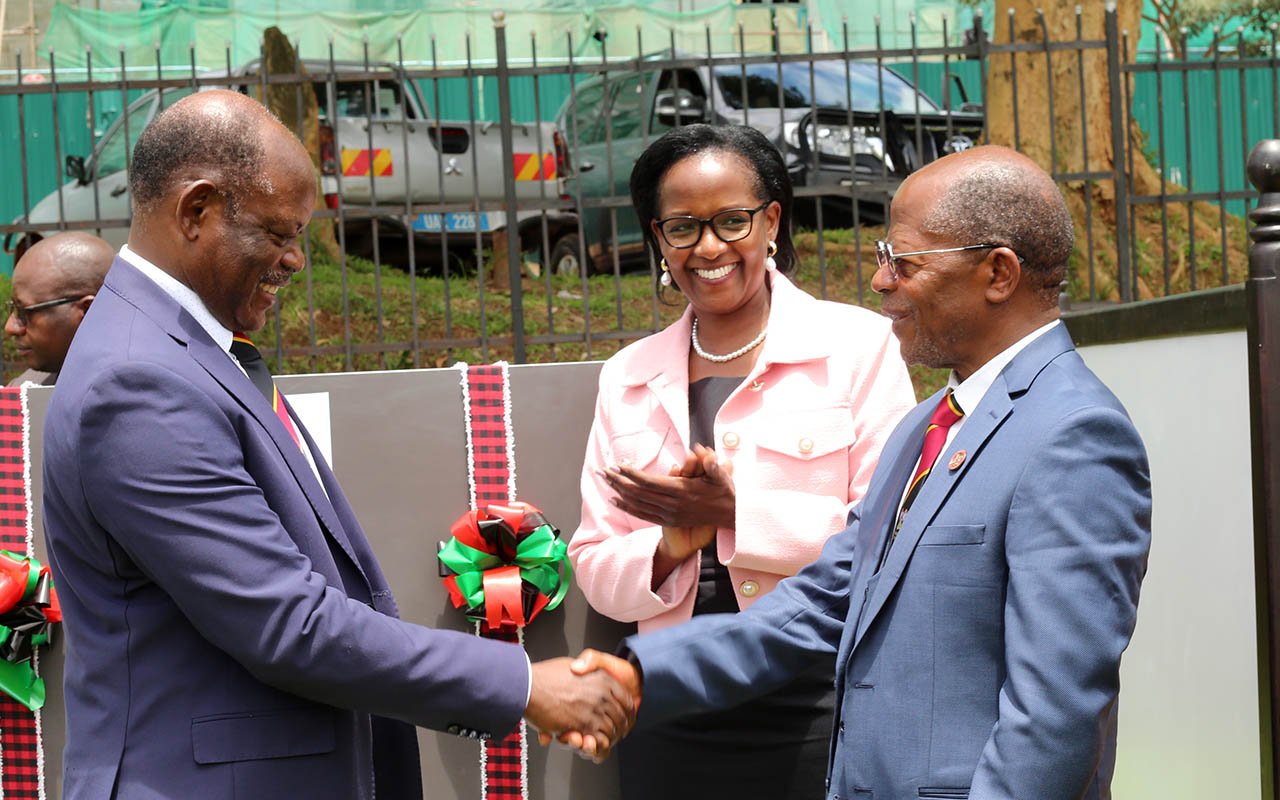Kakungulu: King who died without a throne

With his wife princess Nakalema in the early 1900s. Courtesy Photo
What you need to know:
ANGER
“On the 5th of February 1902 I was dismissed from the District of Bukedi by my masters, but there was no real reason why they dismissed me. I asked them to grant me a small village but in vain, they drove me out into the desert where there was not a single person.”
Kakungulu on his failed land and power acquisition in Bukedi.
When Semei Kakungulu arrived in Naboa, eastern Uganda, he immediately started carving out territory for himself, designed to create a kingdom to rival Buganda, which his rival, Sir Apolo Kaggwa, had edged him out of.
When ill-health prevented him from joining a British expedition to put down a revolt by the Nandi tribe in Kenya, Kakungulu sent Isaka Nzige whom he bestowed upon two titles – Mujasi (army commander) and Pokino (chief) – which, in Buganda, were honours given by the Kabaka.
This posturing caused the Collector, Mr C.W. Fowler to inform the chiefs “that Kakungulu is ruling their country with the permission of H.M. Special Commissioner, and that the country is not, as he seems to have informed them, his personal property.”
“Further that important questions, such as the deposition of native chiefs and the adjustment of important claims and settlement of feuds, are to be brought before me or the Collector succeeding myself in Iganga”.
Fowler also instructed Kakungulu “to cease from levying local supplies from the natives, and to commence immediately, the cultivation of Shambas for the support of his levy, to take no hostile action without my sanction and to endeavour to live in friendly relations with the inhabitants of the area.”
There were other indications that Kakungulu was carrying himself as Kabaka of the area; he had divided up the area into counties resembling Amasaza (counties) of Buganda and bestowed on the individuals he placed in charge tittles enjoyed by county chiefs of Buganda.
Pseudo king
He also prepared for himself a grave resembling the last resting places of the kings of Bunyoro and Buganda, an “enormous pit, some 30 to 40 feet deep and some 15 to 20 feet in length and breadth”.
In April 1901, on his way out of Uganda and at the end of his tour of duty as Special Commissioner, Sir Harry Johnston arrived at Kakungulu’s at Busano not far from the present Catholic Mission at Nyondo. Sir Johnston had deliberately made a detour from the usual route in order to have a final meeting with Kakungulu whose assistance he wanted to round up Sudanese mutineers in Lango. In exchange for his support, Kakungulu asked to be allowed to establish a fort in Budama. He also asked to be officially recognised as Kabaka of Budama.
Before the matter could be resolved, Kakungulu’s forces raided a large number of cattle from Budama. In the ensuing dispute, his men captured Majanga, the chief of the Badama, who was forced to agree to keep his chieftainship as long as he recognised the lordship of Kakungulu.
As this was happening, reports were reaching the Uganda Administration about Kakungulu’s mistreatment of the people east of the Mpologoma River, especially the raiding of Budama. William Grant was later to observe that relation between Badama and Basoga had been good before the arrival of Kakungulu.
In an explanation to the authorities, Kakungulu wrote to the Acting Commissioner on July 30, 1901 claiming that Sir Harry Johnston had instructed him to make war on the Badama but Sir John Milner Gray doubted this claim.
Sent to Budaka in August 1901, Grant expressed concerns about Kakungulu’s ability to hold so much territory (16 garrisons in all) without a clear source of revenue. “…Men without remuneration from government must have some inducement to remain in the country,” Grant noted. “Kakungulu cannot pay them and I cannot but surmise that they have other means of paying themselves from various sources.”
However, Grant failed to find witnesses willing to come forward and speak out against Kakungulu and his methods. The latter was thus able to refute the charges against him.
Pressing on with his ambitions, he claimed that Sir Johnston had made him Kabaka of Bukedi with the boundary of his kingdom running from River Toshi on the eastern border of Lango to the slopes of Mt. Elgon.
Kakungulu’s assumption of regality caused discomfort back home in Buganda as promises of loot and the acquisition of large estates in Bukedi led to considerable emigration of Baganda to Bukedi.
He continued to extend his territory to the well-cultivated western slopes and its foothills of Mt. Elgon. The Bagisu resented this and resisted with force of arms but this resistance provided Kakungulu with the excuse to mount punitive action.
In October 1901, Grant sent W.W. Walker, a junior administrative officer, to reside temporarily at Kakungulu’s headquarters in Budaka and establish why no tax revenue was forthcoming from the area.
Walker very soon got insight into what Kakungulu was doing to the people under his control. Walker “reported that the vast majority of the inhabitants were practically destitute. Some even asserted that they had been driven to feeding on rats. There was practically no cattle, sheep or goats to be seen in the country except those that belonged to Kakungulu and his followers. The inhabitants therefore lacked the wherewithal to pay the taxes.”
When the Acting Commissioner saw Walker’s report, he instructed Grant to immediately disabuse Kakungulu of his illusion that he was Kabaka of Bukedi. Grant was instructed to write to Kakungulu and tell him that the Acting Commissioner “knew nothing about his appointment as king and that he was quite mistaken in imagining that he was a King; that he had no right to give his followers land which belonged to the natives of the country; that ownership of such land would not be acknowledged by the Government as belonging to any of his followers; that he must withdraw with all his people from the territory to the east of Budaka...”
William Grant arrived in Budaka on February 26, 1902 with full powers to allocate land to Kakungulu so long as he complied with instructions.
Kakungulu was to give his version of these events to Sir John: “On the 5th of February 1902 I was dismissed from the District of Bukedi by my masters, but there was no real reason why they dismissed me. I asked them to grant me a small village but in vain, they drove me out into the desert where there was not a single person.”
Kakungulu had requested to settle in densely-populated Nabowa but there was no way he could settle in the area with his men, numbering over 5,000, without displacing thousands of local residents. He had, instead, been given some 20 square miles with Mbale at its centre.
Although sparsely populated, it was infertile. What Kakungulu and his followers were being asked to do is not any different from what settlers have done all over the world- clear the land and farm.
The last straw came in June 1905 when Kakungulu ordered tax to be forcibly collected from Budama. The Baganda tax collectors levied tax by seizing cattle. This gave rise to a lot of discontent. In the inflammatory situation, a Muganda official seized the wife of a prominent chief, tied her up and beat her because she had not given him beer. Her son rescued her and then collected a band of young men who entered the Boma where the Baganda lived and massacred all of them.
The review of this incident concluded that Kakungulu’s usefulness in Bukedi was by far outweighed by his nuisance value and that he needed to be removed from Bukedi.
In 1906, he was sent to Busoga to take up the position of president of the Busoga Lukiiko. He stayed in Busoga for seven years and returned to Mbale to resume his duties as Ssaza chief. He remained in that position until 1923. He died of natural causes at his home at Gangama on November 19, 1929.
Continues Tomorrow




